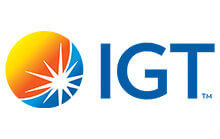Digital advertising is not only hugely complex but fast changing, especially for B2B marketers. Is Google Search still a good option despite soaring call-per-click costs? Does the explosion in bot traffic (estimated at 95% of clicks) make it near impossible to get your ads to the right user base on the Google display network? Is LinkedIn’s enhanced job title targeting worth the extra cost?
Such conversations, while important, are a dangerous distraction. Generating clicks is just the start. What a business needs to know is what happens next. How many people click through – at great cost, only to bounce straight off? Are the leads generated hitting the target personas – or wasting the sales team’s time? Is the LinkedIn campaign generating more business than Google – and how does the Return on Investment (ROI) compare? John Cheney, CEO, Workbooks, explains why an understanding of the complete journey from ad to sale is key to determining campaign value.
Lack of visibility
With costs soaring and budgets tightening, it has become ever more critical to truly understand and measure the success of digital advertising activity. Most B2B SMEs rely on agencies to run their Google, Facebook or LinkedIn advertising campaigns, ensure the business ranks correctly, and that the correct audience is targeted and investment maximised.
But there is a gap between an agency’s measure of success and true business value. While the agency is focused on the number of clicks or links that go through on your advert, simply driving traffic to your website is valueless if it is not the right traffic. How many people land and immediately bounce? How many complete forms and provide a lead? How valuable is the lead – or is it simply requiring salespeople to spend time and effort qualifying the business out, wasting time they could be spending on other, more productive leads?
The problem is that most companies are not tracking the true value of digital advertising. They take the performance figures from the ad agency and they look at their sales activity but there is no end-to-end visibility, no way to determine the ad activity that generated the best revenue.
Joined up journey
This is a major concern, especially for B2B organisations typically operating on a six-to-12-month sales cycle. How long will it take – and how much money will be wasted – before the business spots a problem? How many disgruntled sales people will have been lost to the competition as a result of being fed bad leads? Tracking clicks and page views is meaningless without the ability to track the entire journey from click through to the website to the conversion and a sale – and that is where a CRM tool can be incredibly powerful.
Step 1: Define the journey
It is really valuable to set clear outcomes that encompass the entire journey. What are the target metrics – is the goal pay per views, lead conversions or sales? Create well-defined Key Performance Indicators (KPIs) at the beginning of the project and then work out how they can be delivered. For example, if the ultimate goal is to close 10 new customers, how many leads are required? How many forms will be needed? How many page views?
Understanding the complete journey will help to refine the advertising focus and provide very strong metrics to track performance. While a complete digital advertising campaign’s value can only be measured across six to 12 months – or longer, depending on the company’s typical sales cycle – these more detailed journey metrics will provide a clear indication if the overall campaign is on track within three months or so.
Metrics can also highlight areas of segmentation that are performing better than others – such as whether different prospect groups are responding better to certain keywords or as a result of different digital channels, such as LinkedIn or Facebook. With the ability to track the different advertising campaigns all the way through the journey, a company can quickly understand and respond to B2B customer buying behaviours.
Step 2: Create a feedback mechanism
Feedback is critical. Does the demographic of the leads meet the defined target? If not, and if campaigns are providing lots of clicks but in the wrong geography, industry vertical or job role, ensure the marketing agency knows, quickly. There is no point in generating lots of Financial Director leads, for example, if your business only ever sells to a Marketing Director – or vice versa.
Feedback isn’t black and white – the information needs to be nuanced to explain why the agency isn’t getting it quite right. Build a strong relationship with the agency to create trust, and don’t just use marketing as a conduit for sales team feedback: include regular engagement with the sales people to work out why the leads are not the right shape.
Conclusion
When digital advertising goes wrong, the cost is significant. The downside of PPC advertising is that every single click is a business cost – so attracting the wrong demographic to click can be financially devastating. Outsourcing to a dedicated agency should avoid the most obvious mistakes but it is only by focusing on the second part of the journey – what happens to the leads once in the business – that a company can really control the process and rapidly enhance the ROI of every ad campaign.








